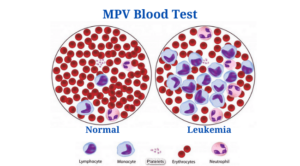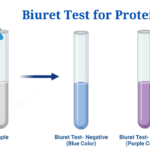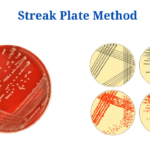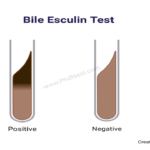What is MPV in Blood Test?
The MPV (Mean Platelet Volume) test is used to assess the average size of platelets in a blood sample.
- Platelets are vital blood cells that are in charge of blood clotting, a process which regulates blood loss after an injury.
- The mean platelet volume (MPV) is a measurement of platelet dimension derived by haematological analyzers based on the volume dispersion throughout a routine blood morphology test.
- The MPV blood testing is conducted as part of the Complete Blood Count (CBC), which is a thorough blood analysis test.
- The MPV test is critical since the average size of platelets increases when the body produces a significant number of platelets, allowing for conclusions about platelet creation as well as destruction.
- The MPV test is not used to diagnose specific disorders; rather, it is used as part of a comprehensive body check-up procedure.
- The test is similar to the platelet count test, which determines the maximum count of platelets in a blood sample.
- The outcomes of MPV testing may not be significant on its own, but they should only be interpreted in the context of other CBC tests.
- The normal MPV varies between 7.5 and 12 fl (femtolitre), with big platelets accounting for 0.2-5.0 percent of the total platelet population.
MPV Value Calculation
- MPV levels are evaluated as part of the CBC, which is a blood analysis procedure.
- MPV values are obtained by dividing the total mass of platelets in a blood sample (plateletcrit) by the total number of platelets in the blood sample.
- In physiological situations, MPV is inversely proportional to platelet count, which is connected with homeostasis as well as the preservation of steady platelet mass.
Interpretation of MPV Blood Test Results
- In humans, the average or normal value of MPV remains between 7.5 to 12 fl.
- Abnormally high or low readings may suggest the presence of various diseases or abnormalities in the individual’s body.
- Further study may be necessary in the case of results with greater or lower MPV values.
- Abnormal results are not often regarded indicators of serious health problems; but, in some situations, they might be significant, thus they must be ruled out.
- Based on the inverse link between MPV as well as total platelet count, a decrease in their mean volume is accompanied by an increase in platelet production.
- The physiological proportion between MPV as well as platelet count is altered in a variety of pathological situations, which aids in the identification of certain of these pathological disorders.
- A low or high MPV value may be totally normal depending on an individual’s lifestyle. As a result, an interpretation should be made only when all of the CBC tests have been completed.
High MPV value
- When an MPV value exceeds 12 fl, it is considered higher than normal. This shows that the platelets’ average size is greater than the average.
- However, the MPV test result cannot be understood in isolation. The entire platelet count should be included.
- If the MPV number is high but the total platelet count is low, it indicates that the bone marrow is manufacturing platelets quickly.
- Platelets which are new or young are larger and have recently been released from the bone marrow, whereas older platelets are smaller and circulate through the bloodstream.
- A higher MPV number may also indicate that older platelets are being destroyed, causing new platelets to be generated in the bone marrow.
- Because a rise in MPV correlates with platelet activation, it is probable that it is a cause of some forms of cancer which result in platelet activation.
- Furthermore, a higher MPV number may be symptomatic of various conditions such as heart disease, hypothyroidism, stroke, or high blood pressure.
Low MPV value
- A low MPV value is defined as one which is less than 7.5 fl. This means that the average size of the platelets is less than normal.
- Since older platelets are smaller, a low MPV number may suggest that the bone marrow is not creating enough platelets.
- However, the low value of an MPV on its own is meaningless. As a result, it should always be accompanied by a total platelet count.
- In some circumstances, low MPV values are reported in chemotherapy patients because they are injected with cytotoxic drugs which produce a drop in platelet count.
- Furthermore, other disorders such as inflammatory bowel disease and aplastic anaemia could be the cause of this.
MPV Blood Test Citations
- https://www.hindawi.com/journals/mi/2019/9213074/
- https://www.healthline.com/health/mpv-test
- http://ddxhub.com/1_2_10_mean.htm
- https://www.researchgate.net/publication/221891888_Are_platelet_indices_of_clinical_use_A_multidisciplinary_review
- https://www.flashcardmachine.com/values.html
- https://www.emedicinehealth.com/complete_blood_count_cbc/article_em.htm
- https://www.answers.com/Q/Which_type_of_blood_cell_helps_in_the_clotting_of_blood
- https://medlineplus.gov/lab-tests/mpv-blood-test/
- https://en.islcollective.com/english-esl-worksheets/search/Diagnostic+Test
- http://njmr.in/uploads/3-2_162-165.pdf
- http://diseaseslist.org/mpv-blood-test-high-low-normal/
Related Posts
- Anisocytosis: Definition, Types, Causes, Symptoms, Treatment
- Endospore Staining: Principle, Procedure, Reagents, Results
- Flow Cytometry: Overview, Principle, Steps, Types, Uses
- Northern Blot: Overview, Principle, Procedure and Results
- MPV Blood Test: Calculation, High and Low MPV Value, Results
- Latex Agglutination Test: Objectives, Principle, Procedure, Results
- Iodine Test: Definition, Objective, Principle, Procedure, Results
- Eosin Methylene Blue (EMB) Agar
- Biuret Test for Protein: Purpose, Objectives, Principle, Procedure, Reagents
- Streak Plate Method: Meaning, Principle, Methods, Importance, Limitations
- Bile Solubility Test: Objective, Principle, Procedure, Results, Uses
- Butyrate Disk Test: Objective, Principle, Procedure, Results, Uses, Limitations
- Beta Lactamase Test: Objective, Principle, Procedure, Results, Limitations
- Bacitracin Susceptibility Test: Objective, Principle, Procedure, Results, Uses, Limitations
- Bile Esculin Test: Objective, Principle, Procedure, Result, Uses, Limitations

















